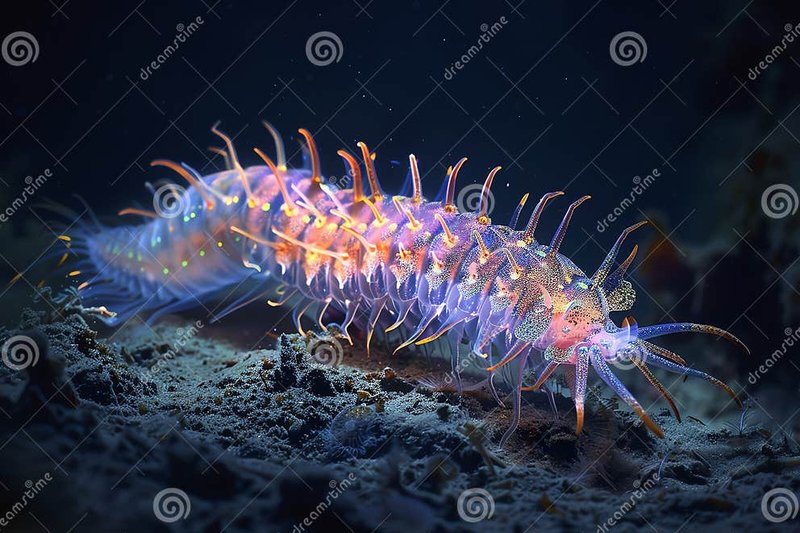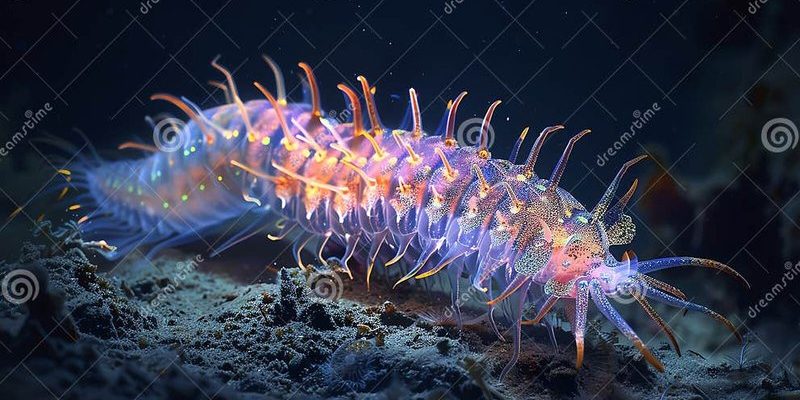
Bristle worms belong to the polychaete family, known for their diverse shapes and sizes. But what makes the bioluminescent varieties truly stunning is their ability to glow in the dark, creating a mesmerizing display in the depths of the ocean. Think of them as the stars of the underwater world, shining brightly in their own little universe. Let’s dive into the captivating realm of bioluminescent bristle worms and explore their unique features, habitats, and the science behind their spectacular glow.
What Are Bioluminescent Bristle Worms?
To start, let’s clarify what bristle worms actually are. They are segmented worms, and most belong to the class Polychaeta. With over 10,000 species, these worms come in various shapes, colors, and sizes. While many bristle worms are unassuming, the bioluminescent ones set themselves apart with their ability to produce light.
You might be wondering how they achieve this magical feat. Bioluminescence is a chemical reaction that occurs in these worms, involving a light-emitting molecule called luciferin and an enzyme known as luciferase. When these two elements interact, they create a beautiful glow—like tiny, shimmering stars under the sea. This unique feature not only captivates observers but also plays a crucial role in the worm’s survival and reproduction.
Imagine wandering into the dark depths of the ocean, where the only light comes from these glowing worms. They can emit light as a defense mechanism to confuse predators or attract mates. This dual purpose makes their glow both mesmerizing and practical.
Where Can You Find Bioluminescent Bristle Worms?
Bioluminescent bristle worms are primarily found in deeper ocean waters and coastal regions. You might spot them hiding in sandy or muddy substrates, where they create burrows or use their tentacles to catch food. A few species even make their homes in coral reefs, where they contribute to the vibrant underwater ecosystem.
These worms thrive in various marine environments, from the warm tropical waters of the Caribbean to the colder depths of the Arctic. Their adaptability to different habitats allows them to flourish in diverse locations. However, not all bristle worms possess bioluminescent abilities; they are a unique subset of this fascinating group.
If you ever get the chance to snorkel or dive in waters known for their bioluminescent life, like the coasts of Puerto Rico or the Maldives, keep an eye out for these glowing wonders. Just imagine watching them dance through the water, creating their own light show. It’s an experience that feels straight out of a fairy tale.
Identifying Bioluminescent Bristle Worm Species
Recognizing bioluminescent bristle worms can be a fun challenge. These worms typically have long, segmented bodies covered in bristles, which give them their name. The glowing species often display vibrant colors, ranging from bright blues and greens to stunning pinks and purples.
One well-known bioluminescent bristle worm is the *Tomopteris* species. These worms are transparent and glide through the water, leaving a trail of light behind them. Another fascinating species is the *Lumbrineris* genus, which boasts striking colors and can be found in various oceanic regions.
When trying to identify these glowing beauties, look for their unique features:
- Color: Bright hues that stand out in dark waters.
- Body Shape: Long bodies with distinct segments and bristles.
- Glow Patterns: Whether they glow continuously or flash intermittently.
It’s like identifying stars in the night sky! The more you observe, the better you become at recognizing their unique traits.
The Science Behind Their Glow
The science behind bioluminescence is as fascinating as the worms themselves. As mentioned earlier, the process involves a chemical reaction between luciferin and luciferase. But what’s truly interesting is how these reactions are triggered and controlled.
In many species, the glow can be activated by various stimuli, such as movement or changes in water pressure. This means that these worms can light up on command, which is pretty impressive! Some researchers believe that the light may also serve as a way to communicate with potential mates or deter predators.
Think about how fireflies light up on warm summer nights. Though they don’t share a close relation with bristle worms, the underlying principle of bioluminescence is similar. Both use light for survival and attraction, showcasing the incredible ingenuity of nature.
This bioluminescent ability has sparked interest in various scientific fields, including medicine and environmental studies. Scientists are exploring how these natural reactions can be harnessed for practical applications, such as developing better imaging techniques.
Why Bioluminescent Bristle Worms Matter
Beyond their beauty, bioluminescent bristle worms play a vital role in the ocean’s ecosystem. They serve as important food sources for various marine animals, from fish to larger predators. Their presence indicates a healthy marine environment, making them valuable indicators of ocean health.
Additionally, studying these worms helps scientists learn more about bioluminescence and its applications. Understanding how they produce light may lead to advancements in medicine, biotechnology, and even conservation efforts.
Here’s the thing: when we explore the wonders of bioluminescent bristle worms, we gain insights into the interconnectedness of life in the ocean. Protecting these delicate ecosystems ensures that these stunning creatures continue to thrive for generations to come.
How to Observe Bioluminescent Bristle Worms
So, how can you see these glowing worms for yourself? If you’re interested in observing bioluminescent bristle worms, here are a few tips for a successful adventure:
1. **Choose the Right Location:** Research areas known for bioluminescence. Popular spots include tropical regions and coastal waters rich in marine life.
2. **Time Your Visit:** The best time to see bioluminescent creatures is often at night when it’s dark. Low-light conditions enhance the visibility of their glowing displays.
3. **Keep It Calm:** When you enter the water, try to move slowly and quietly. Sudden movements can scare away these delicate creatures, making it harder to see them.
4. **Bring the Right Equipment:** If you plan to snorkel or dive, consider using a diving light that doesn’t disturb the natural environment, allowing you to observe without overpowering their glow.
5. **Be Respectful:** Remember, these worms are part of a fragile ecosystem. Enjoy watching them, but avoid touching or disturbing their habitats.
With these tips, you might just find yourself basking in the glow of these underwater marvels.
Final Thoughts
Bioluminescent bristle worms are truly one of nature’s wonders. Their ability to light up the ocean while playing crucial roles in their ecosystem makes them both captivating and essential. Whether you’re interested in marine biology, conservation, or just want to witness the magic of our oceans, learning about these glowing worms opens up a world of curiosity and appreciation.
So, the next time you think of the ocean, remember its hidden gems—the stunning bioluminescent bristle worms. They remind us of the beauty and complexity of life beneath the waves and inspire us to protect these incredible ecosystems for the future. Happy exploring!

